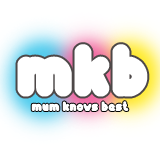What is Down Syndrome?
Normally, a fertilized egg has 23 pairs of chromosomes. In most people with Down syndrome, there is an extra copy of Chromosome 21 (also called trisomy 21 because there are three copies of this chromosome instead of two), which changes the body’s and brain’s normal development. Down syndrome (DS), also called Trisomy 21
The majority of cases of Down Syndrome (about 90%) are not associated with a family tendancy towards having babies with this condition.
Nobody knows why the presence of an extra chromosome no. 21 occurs but it can come from either the mother or father, however it is important to remember that it is nobodies fault and nothing could have been done differently to prevent it happening.
Down Syndrome occurs in all races, in all social classes and in all countries throughout the world. It can happen to anyone.
If you have heard that babies with Down Syndrome cannot breastfeed, this is not the case, many Down Syndrome babies are breastfed.
Statistics…did you know?
Normally, a fertilized egg has 23 pairs of chromosomes. In most people with Down syndrome, there is an extra copy of Chromosome 21 (also called trisomy 21 because there are three copies of this chromosome instead of two), which changes the body’s and brain’s normal development. Down syndrome (DS), also called Trisomy 21
The majority of cases of Down Syndrome (about 90%) are not associated with a family tendancy towards having babies with this condition.
Nobody knows why the presence of an extra chromosome no. 21 occurs but it can come from either the mother or father, however it is important to remember that it is nobodies fault and nothing could have been done differently to prevent it happening.
Down Syndrome occurs in all races, in all social classes and in all countries throughout the world. It can happen to anyone.
If you have heard that babies with Down Syndrome cannot breastfeed, this is not the case, many Down Syndrome babies are breastfed.
Statistics…did you know?
- Two babies with Down syndrome are born every day in the UK. Around one in every 1,000 babies born will have Down syndrome.
- There are 60,000 people in the UK with the condition.
- Although the individual chance of a baby having Down syndrome is higher for older mothers, more babies with Down syndrome are born to younger women, reflecting the higher birth rate in this group.
- Down syndrome is caused by the presence of an extra chromosome in a baby’s cells. It occurs by chance at conception and is irreversible.
- Down syndrome is not a disease. People with Down syndrome are not ill and do not “suffer” from the condition.
- All people with the syndrome will have a varying degree of learning difficulty. However, the majority of people with Down syndrome will walk and talk and many will read and write, go to ordinary schools and lead fulfilling, semi-independent lives.
- Today, with the right support, people with Down syndrome can enjoy a life of sixty years plus.
Some common myths
- “People with Down syndrome don’t live very long”
Today, people with Down syndrome can look forward to a life of 60 years plus. - “Only older mothers have babies with Down syndrome”
Although older mothers have a higher individual chance of having a baby with Down syndrome, more are born to younger mothers, reflecting the higher birth rate in this group. - “People with Down syndrome cannot achieve normal life goals”
With the right support, they can. The vast majority of people with Down syndrome learn to walk and talk, and many are now attending mainstream schools, passing GCSEs and living full, semi-independent adult lives. - “People with Down syndrome all look the same”
There are certain physical characteristics that can occur. People with Down syndrome can have all of them or none. A person with Down syndrome will always look more like his or her close family than someone else with the condition.
Some useful advice and support can be found here:

No comments:
Post a Comment